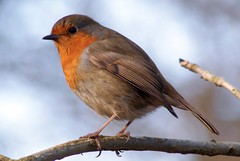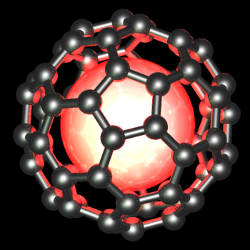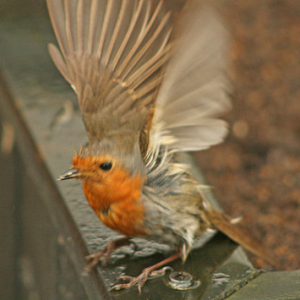Highlights
CQT work on the quantum biology of birds draws media interest

 by Gidzy
by Gidzy
Finding the Centre for Quantum Technologies mentioned in news stories about European robins may come as a surprise, but work by CQT’s Vlatko Vedral, Simon Benjamin and Elisabeth Rieper suggests these birds may be able to teach us a thing or two about quantum physics.
Their results, published in the 28 January issue of Physical Review Letters, have been reported by Science News, New Scientist and other popular news outlets (see list below).
With collaborators at the University of Oxford, UK, Vlatko, Simon and Elisabeth analysed the results of a recent experiment on robins’ ability to perceive magnetic fields. This skill helps the birds navigate using Earth’s magnetic field on their long migrations.
The CQT and Oxford scientists are interested by the idea that quantum effects can be important in the “warm and wet” environment of life, when quantum experiments in the lab often require very cold temperatures and vacuum conditions to preserve the delicate quantum states under study.
One theory for how birds’ magnetic compass operates, known as the radical pair (RP) mechanism, relies on the evolution of a quantum state of two electron spins under the influence of Earth’s magnetic field. The RP mechanism supposes that light excites the electron-spin pair in special molecules at the back of the bird's eye.

Recent tests carried out in Frankfurt, Germany, showed that exposing robins to a very small oscillating magnetic field disrupts their ability to orientate. Considering the oscillating magnetic field as “noise” that disturbs the quantum state of the electron-spin pair, the CQT and Oxford scientists used the experimental data to estimate the state’s robustness. Their calculations suggest that the electron spins remain in a coherent and entangled state for at least tens of microseconds.
When two particles are entangled, their behaviour is coordinated no matter how far apart they are, and when their quantum state is coherent, they can exist in a superposition of multiple states. The best artificial molecular systems for preserving coherence in the lab (such as atoms trapped in carbon buckyballs, pictured) only manage 80 microseconds at room temperature.
Providing the assumptions are correct, this raises the intriguing question of how birds protect the spin pairs. Protecting the coherence and entanglement of quantum states is important in designs for practical quantum technologies such as computing systems. Do birds do something that quantum information scientists can learn from?
Selected coverage in the media:
- Wired Science: In the Blink of a Bird's Eye, a Model for Quantum Navigation
- The Daily Mail: Birds use quantum theory to literally 'see' Earth's magnetic field as they fly
- Science News: Quantum compass for birds
- New Scientist: Quantum states last longer in bird's eyes
- University of Oxford Science Blog: Quantum Robins lead the way
- The Physics arXiv Blog, hosted by MIT’s Technology Review: Bird Navigation Breaks Entanglement Record
Update September 2012: See also the highlight "Results on birds' proposed quantum vision fly apart" about new research on this topic.
Learn more
Related Stories
 | Results on birds' proposed quantum vision fly apart September 25 2012 |






